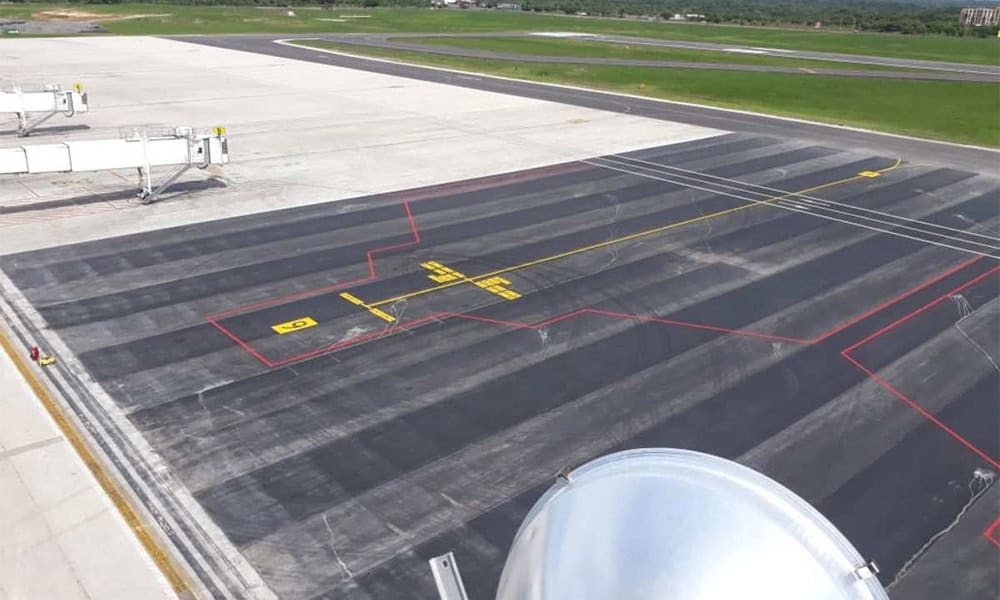Contractors began repairs on the runway at Daniel Oduber Quirós International Airport this week, focusing on sections that did not meet required standards after a major overhaul earlier this year. The work, set to last 15 days, runs only at night to keep flights moving without delays.
The General Directorate of Civil Aviation confirmed the start of operations, with crews active from 9 p.m. to 6 a.m. daily. This schedule allows the airport to open fully each morning, maintaining normal service for passengers and airlines. Authorities state that all incoming and outgoing flights continue as planned.
The fixes address pavement areas with condition ratings below contract levels, as identified by quality checks. The contractor, MECO, covers the full cost of these adjustments. Crews follow an approved plan that includes safety protocols and cleaning to prepare the runway for use by dawn.
This round of work stems from a preliminary report released in August by the National Laboratory for Materials and Structural Models at the University of Costa Rica. The document highlighted early signs of wear on the runway, which underwent a $40 million rehabilitation completed in April. Issues included uneven deformations and structural inconsistencies not expected in a recent project.
Experts noted bulges and potential flaws in the original execution during inspections. A team from Civil Aviation, the lab, and the Central American Air Navigation Services Corporation visited the site in August to review the findings. Their assessment led to the current repairs, with final approval depending on new tests showing improved ratings.
The situation connects to the ongoing Pista Oscura investigation, where prosecutors examine how MECO secured the initial contract. The probe questions if officials simulated an emergency to award the deal, potentially involving falsified damage reports from a storm. Raids in May led to arrests, including former Public Works Minister Mauricio Batalla and the ex-director of Civil Aviation.
MECO has defended its role, stating that changes during the project saved costs and met needs. The company questioned aspects of the lab’s testing methods but agreed to make corrections under the contract terms. Prosecutors added the August report to the case file, strengthening claims of substandard work.
For Guanacaste residents as well as tourists, the airport remains a main entry point, handling traffic from North America and Europe. With the dry season approaching, these timely fixes aim to support steady operations. Officials expect the runway to perform reliably once verified.
The Directorate emphasizes that the nighttime approach minimizes any risk, drawing from similar past interventions. Travelers can check airline updates, but no changes to schedules have occurred so far.






